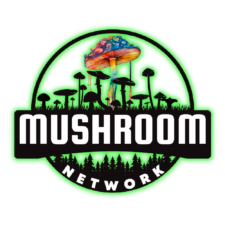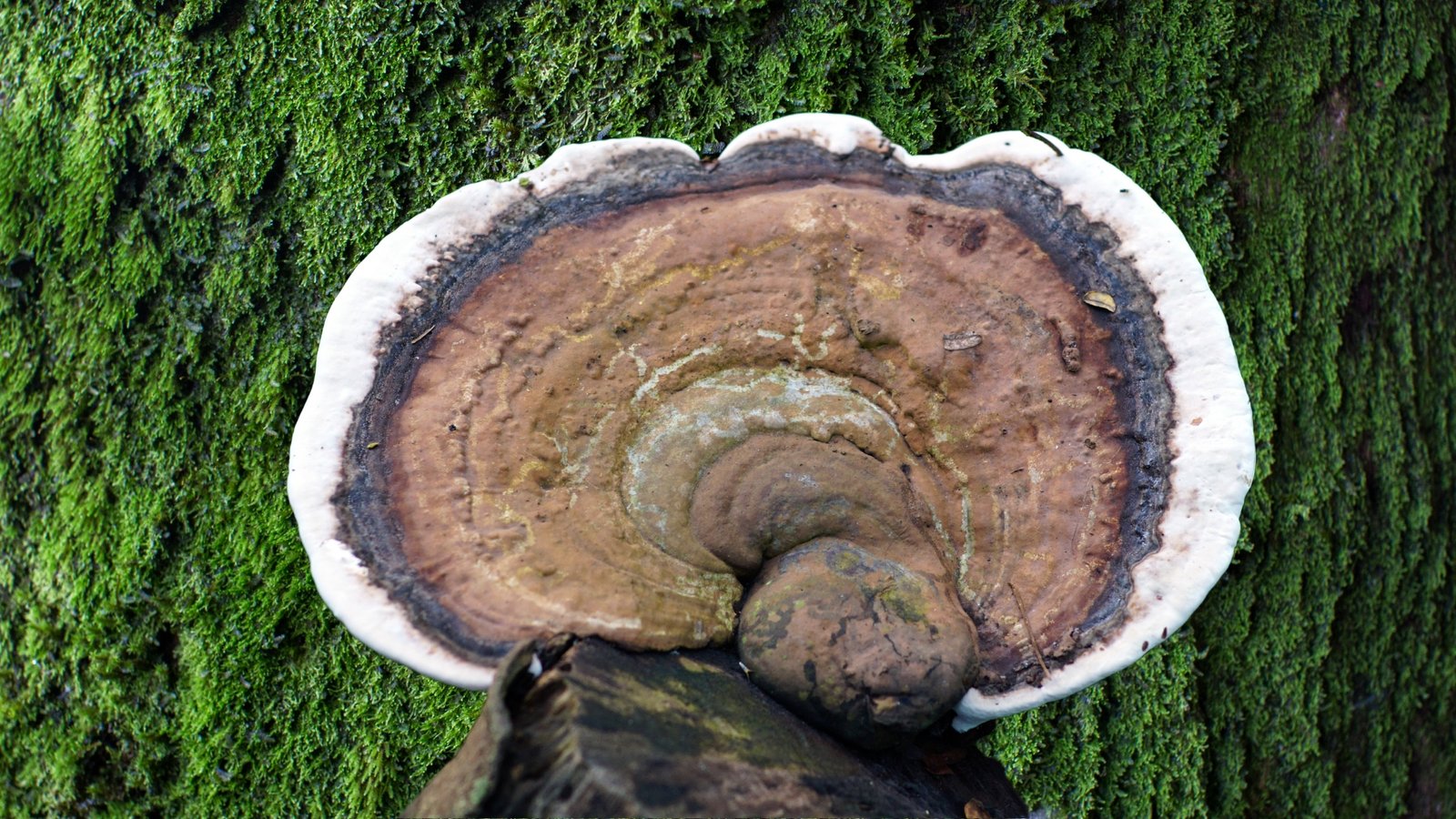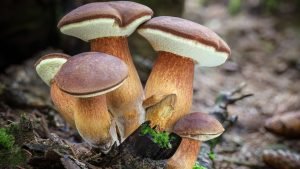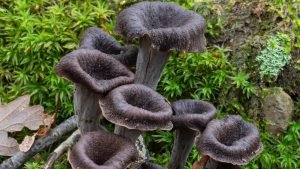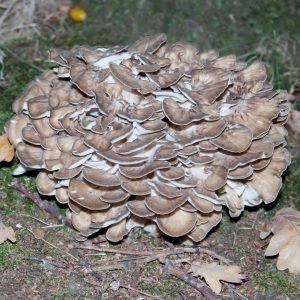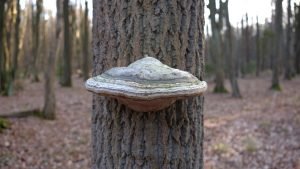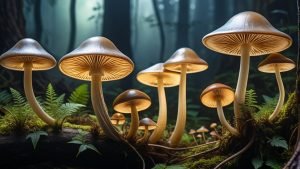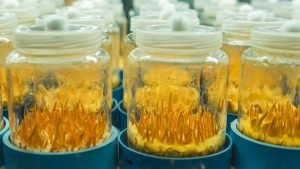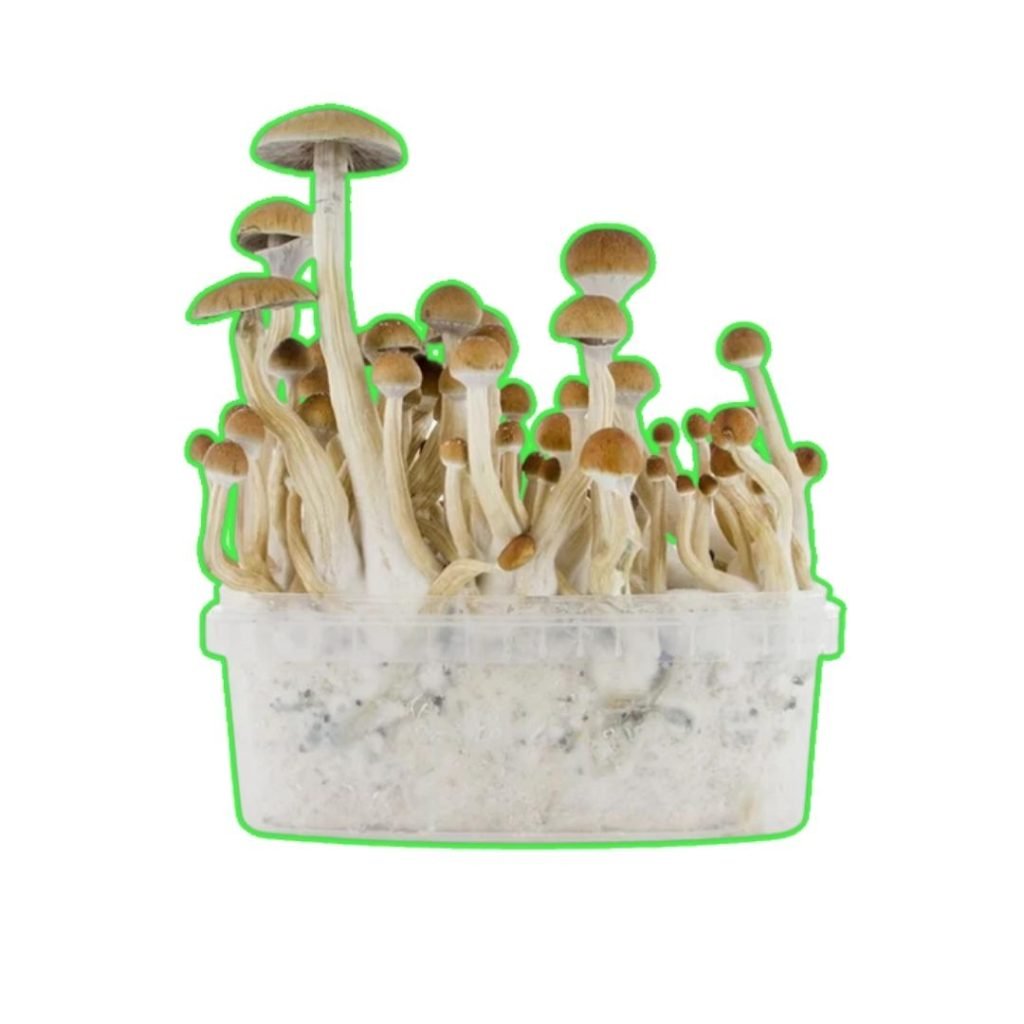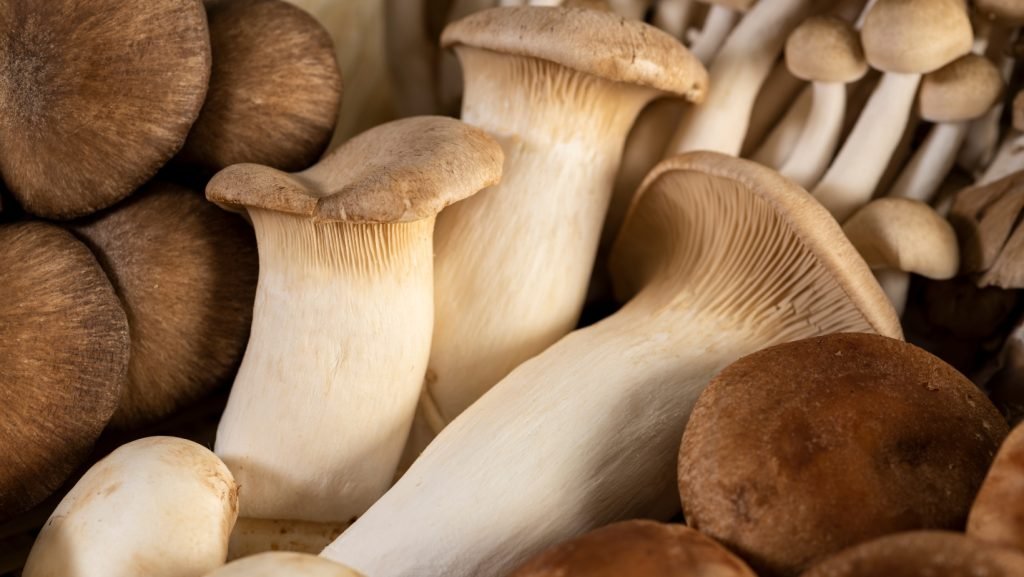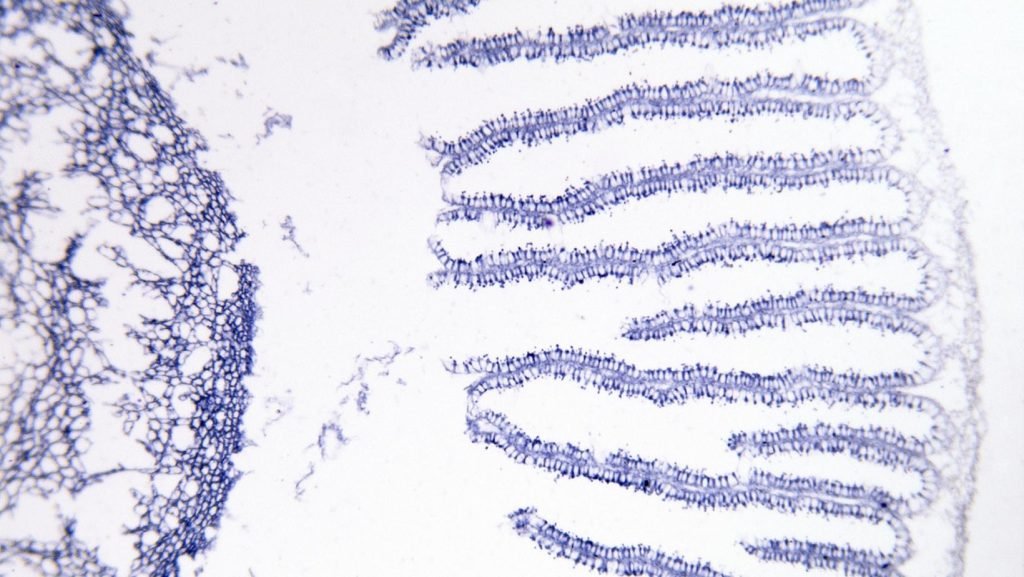Greetings, mycology aficionados and natural art enthusiasts! Today, we’re delving into the fascinating world of Ganoderma Applanatum, commonly known as Artist’s Conk. This mushroom is not only a marvel of nature but also a canvas for creativity.
SCIENTIFIC NAME:
(Ganoderma Applanatum)
COMMON NAME(S):
Artist’s Conk | Artist’s Bracket | Bear Bread
I-NAME:
ARTS
Founding Mycologist/Discovered By:
-Unknown-
If you have information, please help us enrich our database!
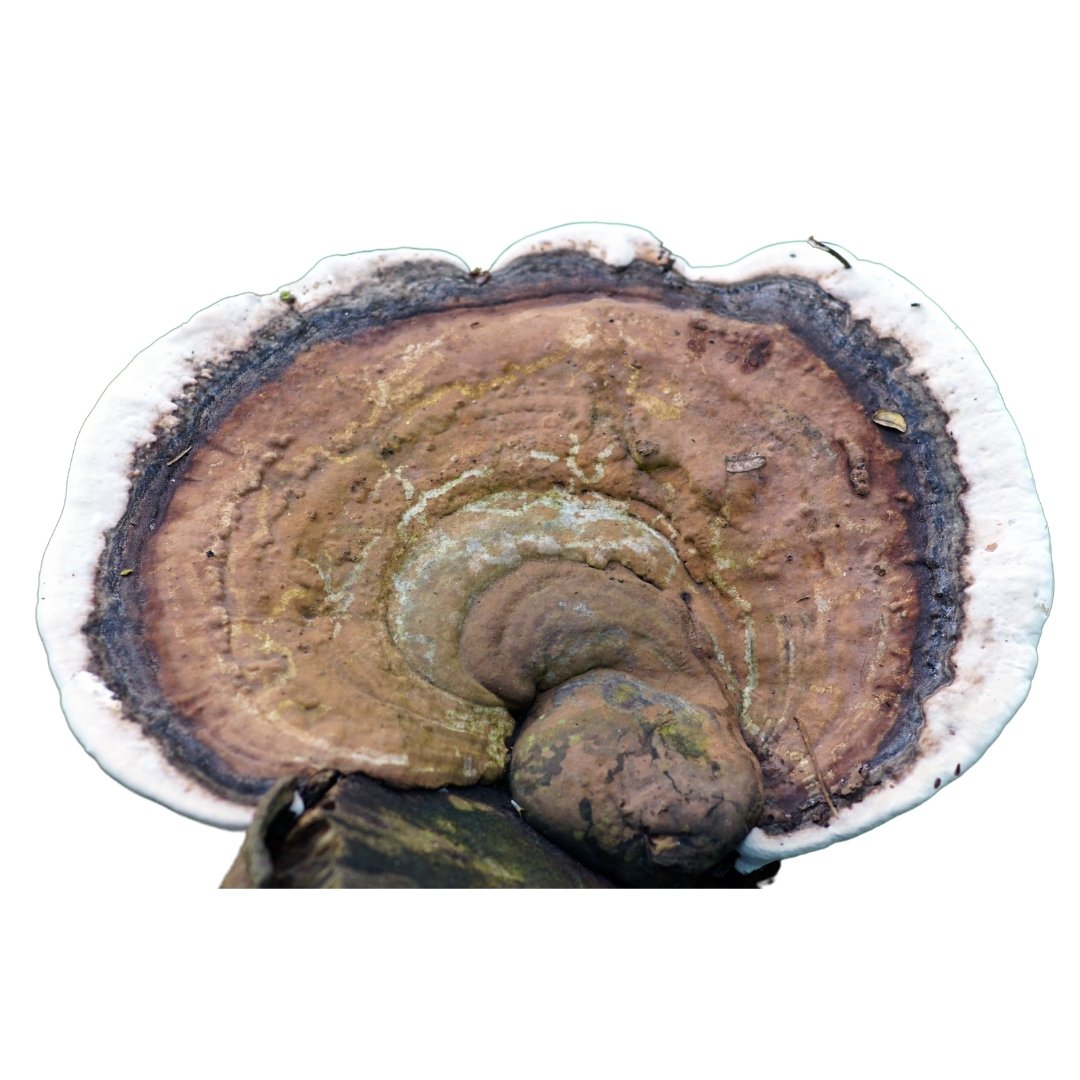
RECOMMENDED TEMPERATURES
Colonizing Temps:65° – 70° | Fruiting Temps:60° – 65° |
SPORE COLOR:
BROWN to DARK BROWN
Behold the Ganoderma Applanatum, a mushroom that doubles as a natural art piece. This perennial bracket fungus is not only an ecological wonder but also a medium for artistic expression.
DESCRIPTION:
This woody, shelf-like fungus displays a grey to brown upper surface, ideal for etching artworks. Its underside is white and pores are minute, offering a smooth canvas for nature-inspired creativity.
INTENDED USES:
- 🍄 Ascetic-Looking: Renowned for its unique appearance and use as a natural canvas for artistic carvings.
- 🔬 Mycology Research: Studied for its role in wood decay and its impact on forest ecosystems.
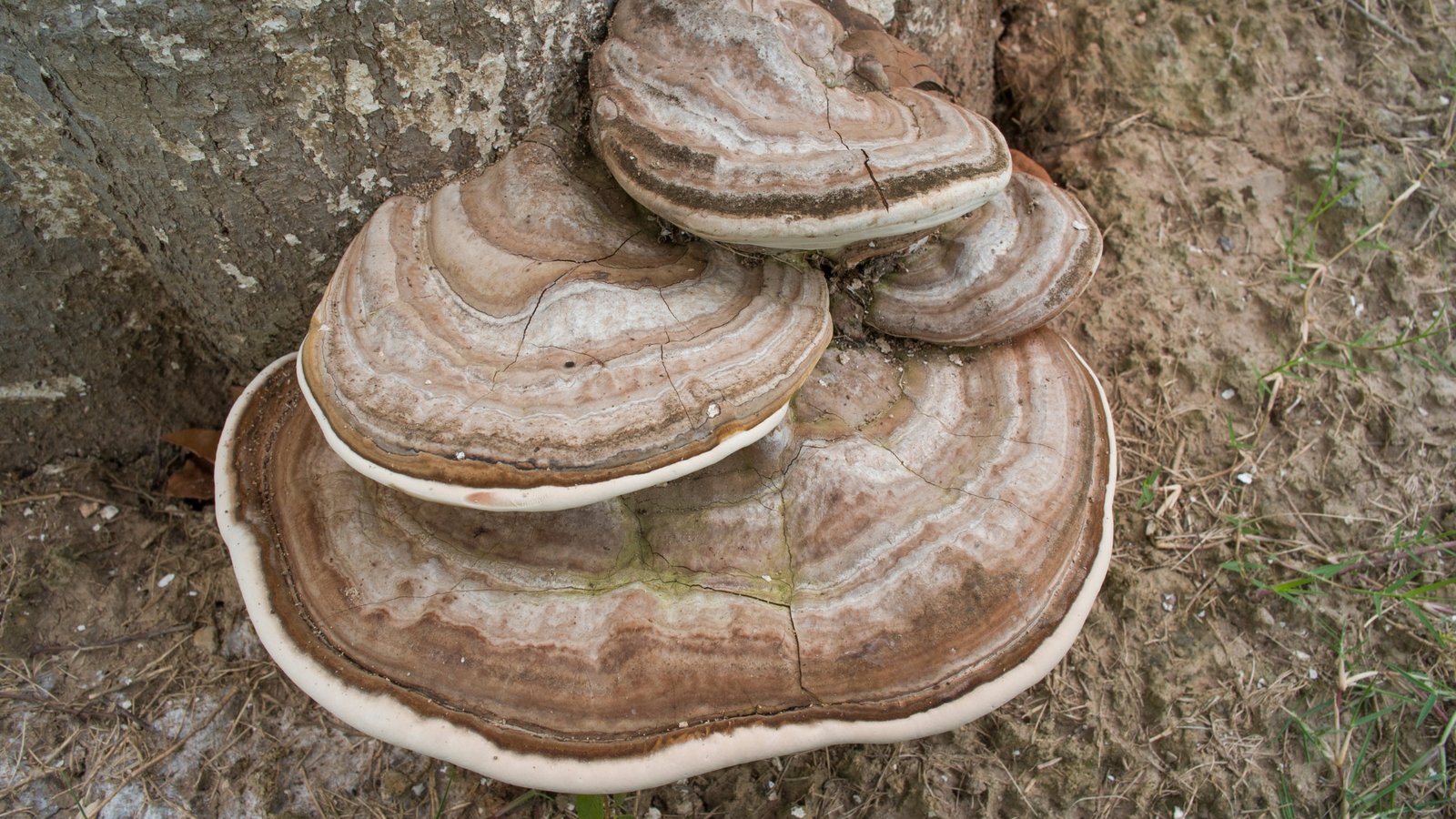
HABITAT AND DISTRIBUTION:
Commonly found on dead or dying hardwood trees, particularly in temperate forests across North America, Europe, and Asia.
ECOLOGICAL ROLE:
Serves as a decomposer, breaking down lignin in wood, thus playing a crucial role in nutrient cycling within forest ecosystems.
GROWTH AND CULTIVATION:
While not typically cultivated due to its wood-decaying nature, it thrives in natural woodland settings, particularly on old or fallen trees.
No posts found!
HISTORICAL & CULTURAL INFO:
Long admired by artists and naturalists, the Artist’s Conk has been used as a canvas for intricate carvings, with a history that intertwines art and mycology.
GENETIC LINEAGE/HISTORY:
Belongs to the Ganodermataceae family, known for its medicinal and ecological significance. Its lineage reveals a long-standing relationship with hardwood forests.
No posts found!
CHEMICAL COMPOSITION:
Contains compounds typical of the Ganoderma genus, known for their potential medicinal properties, including polysaccharides and triterpenoids.
MEDICAL PROPERTIES (if applicable):
While primarily known for its artistic and ecological importance, ongoing research explores its potential medicinal properties shared with other Ganoderma species.
CULINARY USES (if applicable):
Due to its tough, woody texture, Artist’s Conk is not used in culinary applications.
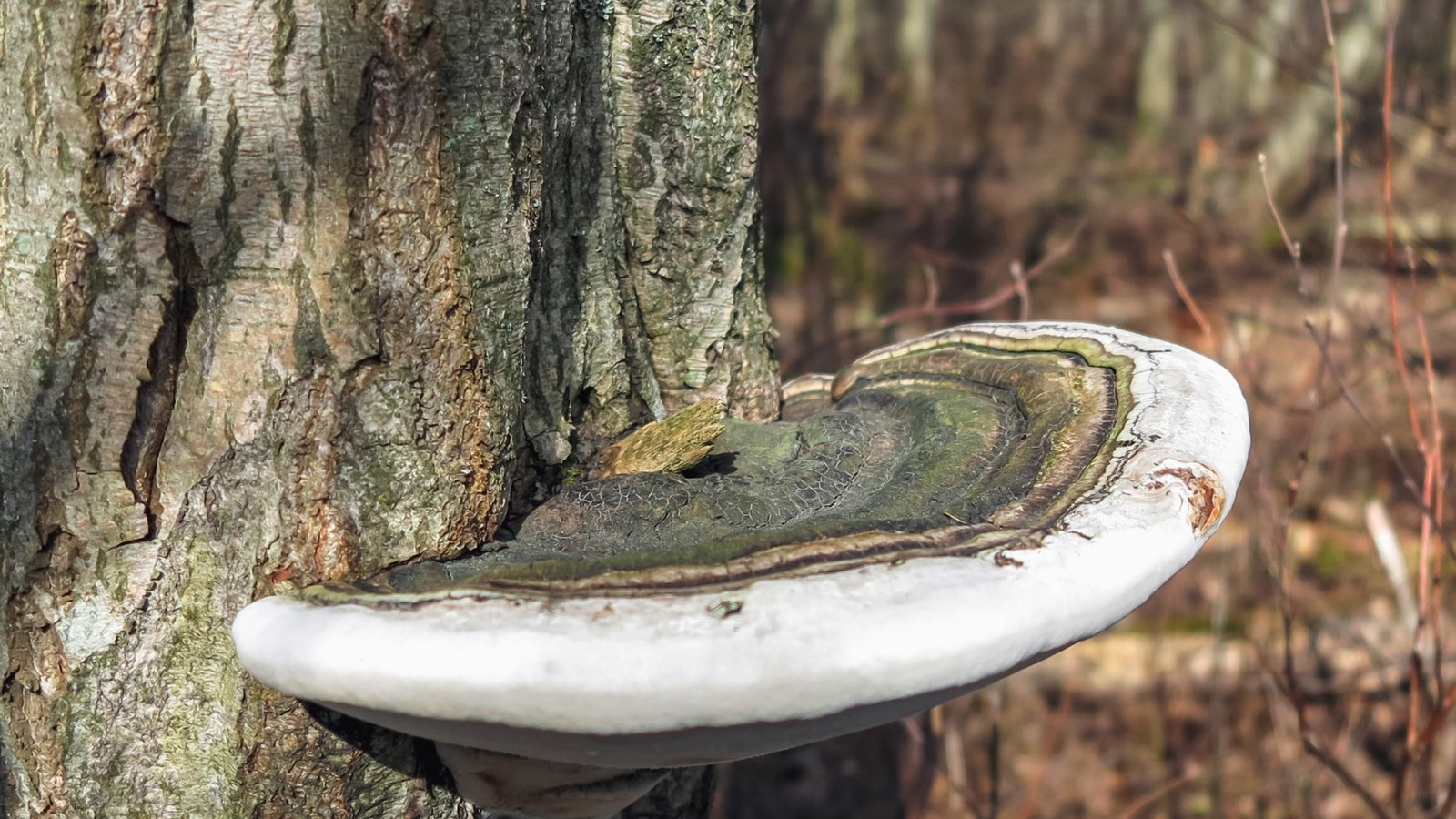
CAUTIONS & WARNINGS:
Artist’s Conk is not edible. Its value lies in its ecological role and use as a medium for artistic expression.
FINAL CONSIDERATIONS:
As we conclude, remember that the Artist’s Conk is a testament to nature’s beauty and utility. Explore our 🍄 Marketplace to discover more about this natural art medium and its ecological significance.
Don’t forget to check out the 🍄 Mushroom Network’s Marketplace to see what’s available. But hurry, our shelves are constantly evolving, and you wouldn’t want to miss out on this wonderful mushroom. Join our growing network of Patrons, Genetics, and Mycologist Vendors only on the 🍄 Mushroom Network!
No posts found!
No posts found!
FAQs:
No, it is inedible due to its tough texture.
Its underside can be etched to create lasting natural artwork.
On dead or dying hardwood trees, especially in temperate forests.
While not commonly used for medicinal purposes, it may share properties with other Ganoderma species.
It plays a vital role in decomposing wood and recycling nutrients in forests.
Related Articles:
Artist’s Conk/Bracket (Ganoderma Applanatum)
Greetings, mycology aficionados and natural art enthusiasts! Today, we’re delving into the fascinating world of...
Read More...Other Mushroom Species To Research:
Bay Bolete (Imleria Badia)
Hello, esteemed mycophiles and curious minds alike! Whether you’re a seasoned mycologist or a fledgling...
Read More...Black Trumpet (Craterellus Cinereus)
Greetings, fungal aficionados and nature lovers! Today, we embark on a fascinating exploration of Craterellus...
Read More...Hen of the Woods (Grifola Frondosa)
Scientific Name: Grifola Frondosa COMMON NAME(S): Hen of the Woods | Maitake The Hen of...
Read More...False Parasol (Chlorophyllum Molybdites)
SCIENTIFIC NAME: (Chlorophyllum Molybdites) COMMON NAME(S): False Parasol | Green Vomiter | Green-Spored-Parasol | Green...
Read More...Other Recommended Reads:
Agarikon Mushrooms: The Ancient Forest’s Answer to Modern Ailments
About This Article: Step into the forest’s pharmacy with our latest deep dive into Agarikon...
Read More...Sacred Fungi of the Rainforest: The Amazonian Cubensis’ Spirited Journey
About This Article: Unlock the spiritual spores of Amazonian Psilocybe Cubensis! Our latest article takes...
Read More...Cooking with Cordyceps: Culinary Adventures in Medicinal Mycology
Mycology, the study of fungi, has long fascinated humanity for its diverse range of applications....
Read More...Ancient Fermentation and Fungi: The Role in Chinese Gastronomy and Alchemy
About This Article: In the annals of Chinese history, the intersection of gastronomy and alchemy...
Read More...Whoa there, Spore Sport! 🍄 Looks like you’re not logged in yet. Don’t you know what you’re missing? MYCO-CREDITS! Imagine all the fungal fun you could have. It’s like finding a Morel in May and not picking it. Tragic, right? Log In or Become a Myco-Patron and start racking up those credits. It’s more rewarding than finding a mushroom in your backyard! 🌟🏡
